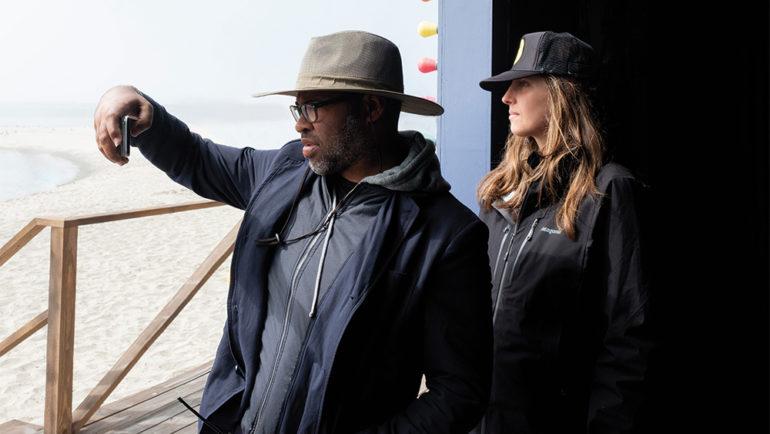Production Designer Ruth De Jong Tethers the Worlds of Jordan Peele’s ‘Us’
By Jazz Tangcay
LOS ANGELES (Variety.com) – Jordan Peele’s “Us” is a daring home invasion story and so much more. It’s a commentary on race in America. It’s a story that forces to look at ourselves.
The film opens with a commercial for Hands Across America. We’re in 1986 and there are VHS tapes on the shelves: “The Goonies,” “The Right Stuff” and “C.H.U.D.” A young girl sits mesmerized watching the commercial. It’s all in the detail of the production design.
The girl is Adelaide Wilson. She’s on vacation in Santa Cruz, Calif., and she’s wearing a Thriller T-shirt, eating a red candy apple. She wanders along the boardwalk and goes into a house of mirrors. It’s terrifying. She’s terrified. She’s lost in the hall of mirrors. As she turns, she sees not her reflection, but a frightening version of herself.
Production designer Ruth De Jong says when she first met with director , he mentioned how he loved the two worlds she had created for “Manchester by the Sea” and “Twin Peaks.”
Fascinated by them, “he wanted to combine those two worlds, where the upper world is very realistic, honest, natural and not contrived.”
De Jong says that the scenes on the Santa Cruz boardwalk were shot on location in the seaside city. “We built the entire hall of mirrors that she goes through. That was a lot of fun, working with two-way mirrors that allowed the DP to shoot it without being seen.”
For the other world, Peele and De Jong wanted it to be “very surreal and stylized.” The world was built on a Universal soundstage. “I’d found a bunch of research out of [South] Korea. I was studying living underground and in the bunkers there,” she says. To create that world, De Jong built the classrooms, the bunk room and the cafeteria. She worked with Peele and costume designer Kym Barrett on the color palette for the other world. “We landed on creating that whole world in flesh tones to give it an unsettling feeling. That whole world was in Jordan’s head. A lot of the work was extracting that from his head and articulating that into the design.”
The film’s $20 million budget meant there were challenges when it came to build out his vision. “I had the hallway much shorter,” De Jong says. But she was able to make it longer thanks to the supportive production team. She singles out producer Daniel Lupi, with whom she had previously worked on “There Will Be Blood.”
“He’s someone who would go on location scouts. He wanted that hallway much longer and he said, ‘We’ll figure out the money.’” She was also able to create the vast space of the tethered world through visual effects. “We worked with Industrial Light and Magic to make that happen. They took exactly what we built, mirrored it and elongated it.”

